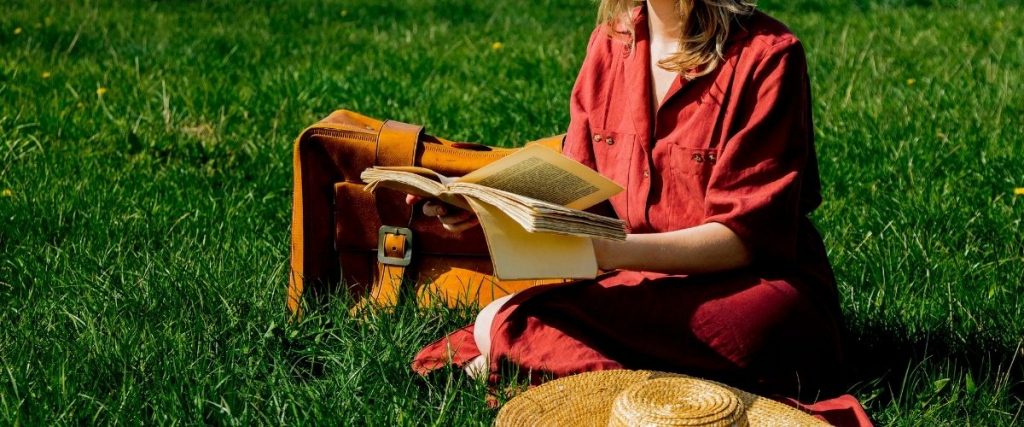Literary Tourism
The Ribeira Sacra offers literary tourists a world of novels.
What a wonderful experience it is to combine two passions: reading and traveling! Do you enjoy reading? Have you ever considered exploring the London of Sherlock Holmes, the Germany of the Grimm brothers, or Victor Hugo’s Paris?…
And in Spain…
Who has not been to Salamanca and strolled through the garden of Calisto and Melibea, the inspiration for Fernando Rojas‘ work “La Celestina”?
Shall we head south to Granada, declared “City of Literature” by UNESCO in 2014, to follow the Lorca route through the beautiful city where playwright Federico García Lorca lived?
And why not Madrid? Declared “World Book Capital” by UNESCO in 2001.
Did you get to visit the Barceló Market before its transformation to discover the everyday life of Madrid as described by Almudena Grandes?Did you try to follow in the footsteps of Max Estrella through the darker side of Madrid, as described by Valle-Inclán in his work “Luces de Bohemia”
Let’s head east to Barcelona, declared “City of Literature” by UNESCO in 2015. Did you visit the Eixample district where Carmen Laforet’s “Nada” is set? Did you marvel at the Basilica of Santa Maria del Mar, “The Cathedral of the Sea,” by Ildefonso Falcones? Did you look for Pepe Carvalho’s office on Las Ramblas, as written by López Montalbán?…
In our literary journey, we arrive in Galicia.
Did you explore Vigo in the 1960s and the Vigo of today with Amara Castro Cid in “El tiempo suficiente”?
Did you take a walk through Príncipe Street? Do you know the “noir” Vigo of Domingo Villar, where we can walk with Leo through Porta do Sol or travel to Cangas by boat across the estuary?
Did you follow the “roteiro” of Ourense to trace the steps of the three “drunks” in Eduardo Blanco Amor’s work “A esmorga”?
Did you visit the Burgas, the Roman Bridge, or the Main Square? If you answered yes, do not hesitate—you are a literary tourist.
What Is Literary Tourism?
Let’s start by answering this question with the definition provided by Marta Magadán and Jesús Rivas: literary tourism is “a form of cultural tourism that takes place in locations related to events in fictional texts or the lives of authors. It’s a new form of cultural tourism that connects fiction with the real world.”

Who Are We, the Literary Travellers?
More and more of us are embracing this type of tourism in which, as visitors, we explore places of fiction or reality where the action of a literary work unfolded or where the authors of these works lived.
During our journey, we seek the sensations that walking in the same places as the characters of our favourite works evokes. Seeing, even if only from the outside, the house they lived in. Treating ourselves to the landscapes their eyes could have witnessed…
In short, we want to step into the shoes of literary characters experiencing what they went through in specific spaces and immersing ourselves in the novel that brought us to that place.
And, of course, getting to know the places where our favourite authors lived or that inspired them.
Discover the Ribeira Sacra through Literature
One way to travel without leaving home is through literature. Sometimes, books transport us to imaginary worlds, while other times, those worlds exist.
Arribeirados wants to give you the opportunity to travel to the locations where some of the most current novels are set.
After reading some of the works set in the Ribeira Sacra, we decided to create a new route to explore the Ribeira Sacra: a literary route.
There are numerous works set in the Ribeira Sacra, and while we cannot cover them all, we can certainly explore the ones we have.
Dolores Redondo: "Todo esto te daré”
On this journey, we will immerse ourselves in the colourful landscapes so vividly described by Dolores Redondo in her work “Todo esto te daré.”
“The brown of the gnarled vine trunks, crowned with bright green leaves of late summer, among which a few were beginning to turn red…”
We will accompany Manuel on his journey through the Ribeira Sacra and discover the land that Álvaro loved so much.
We will contemplate the beautiful village of Belesar, divided in two by the Miño River and connected by a bridge that occupies the place of a Roman one.
With Daniel and Manuel, we will traverse the waters of the Miño River, explore the vineyards, and the guardhouses that reflect in these calm waters.
We will participate in the grape harvest in the area known for its “heroic viticulture” and taste the wines of the “Bodega la Heroica,” the result of men’s labour.
With great effort, we will climb the terraced vineyards, “socalcos.”
We will savour the mouthwatering maize pie and we will cool down the broth with bread.
María Oruña's "El bosque de los cuatro vientos”
In this journey, María Oruña transports us to Ourense, where on the banks of the Sil River, the imposing Monastery of Santo Estevo de Ribas de Sil awaits us, a location where part of the action of this novel unfolds.
In Santo Estevo, Nogueira de Ramuín, we will encounter stone images that speak of their past, telling us their story, and a forest shrouded in magic and tradition ,”because Galicia was the mystery of ancient and wise gazes; it was fury, nobility, pain, it was green and it was water.”
This work features two stories separated by more than two centuries, but they share:
- The same setting: the Monastery of Santo Estevo, in the 19th century, and the Parador de Santo Estevo in the present day.
- A legend: about the nine rings of the monastery's bishops.
Through this novel, we will discover life revolving around the monastery/parador and the small town of Santo Estevo.
With the young Marina and the apothecary’s assistant, Franquila, we will move among potions in the monastery’s apothecary, venture into the forest to search for herbs to prepare medicines and ointments, and explore the monastery’s forest and gardens with its “sequeiros” and mills.
The current Parador de Santo Estevo, next to the village, will be shown to us by Jon Bécquer as we stroll through the small town of Santo Estevo and have breakfast at the Parador, where we can spend the night.
With Amelia, the restorer, we will explore the Church of Santo Estevo and the wonders it holds.
Let’s return to the Miño River and travel with one of Xabier Quiroga’s novels.
Volvamos al río Miño y viajemos con una de las novelas de Xabier Quiroga.
Xabier Quiroga's "La casa del nazi”
This novel consists of two storylines set in two different times, one in the mid-20th century and the other in the present day.
While the action of the first storyline takes place in a highly specific area of O Saviñao, the second one expands the scope.
With Loliña, we will discover the area of San Martiño da Cova, Fión, Seoane, and A Cova. We will dance in the hall of the Casa Grande, known as the “Pazo de Arxeriz.”
With Pepe Reina or Reiniña, we will visit Pazo de Arxeriz, approach Escairón to enjoy octopus (pulpo a feira), and explore Monforte de Lemos, following the footsteps of Doña Manolita.
In Monforte de Lemos, we will walk along Cardinal Street, stroll along the Malecón, and cross the old bridge that Doña Manolita walks every day at seven in the morning to reach the nuns’ home, the San José elderly residence.
Do you like our plan? Then pack your suitcase and join us on this literary journey like no other through the Ribeira Sacra.





